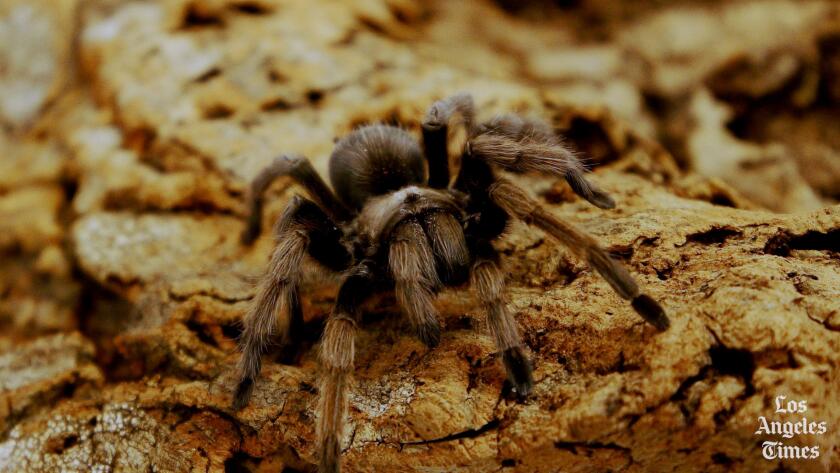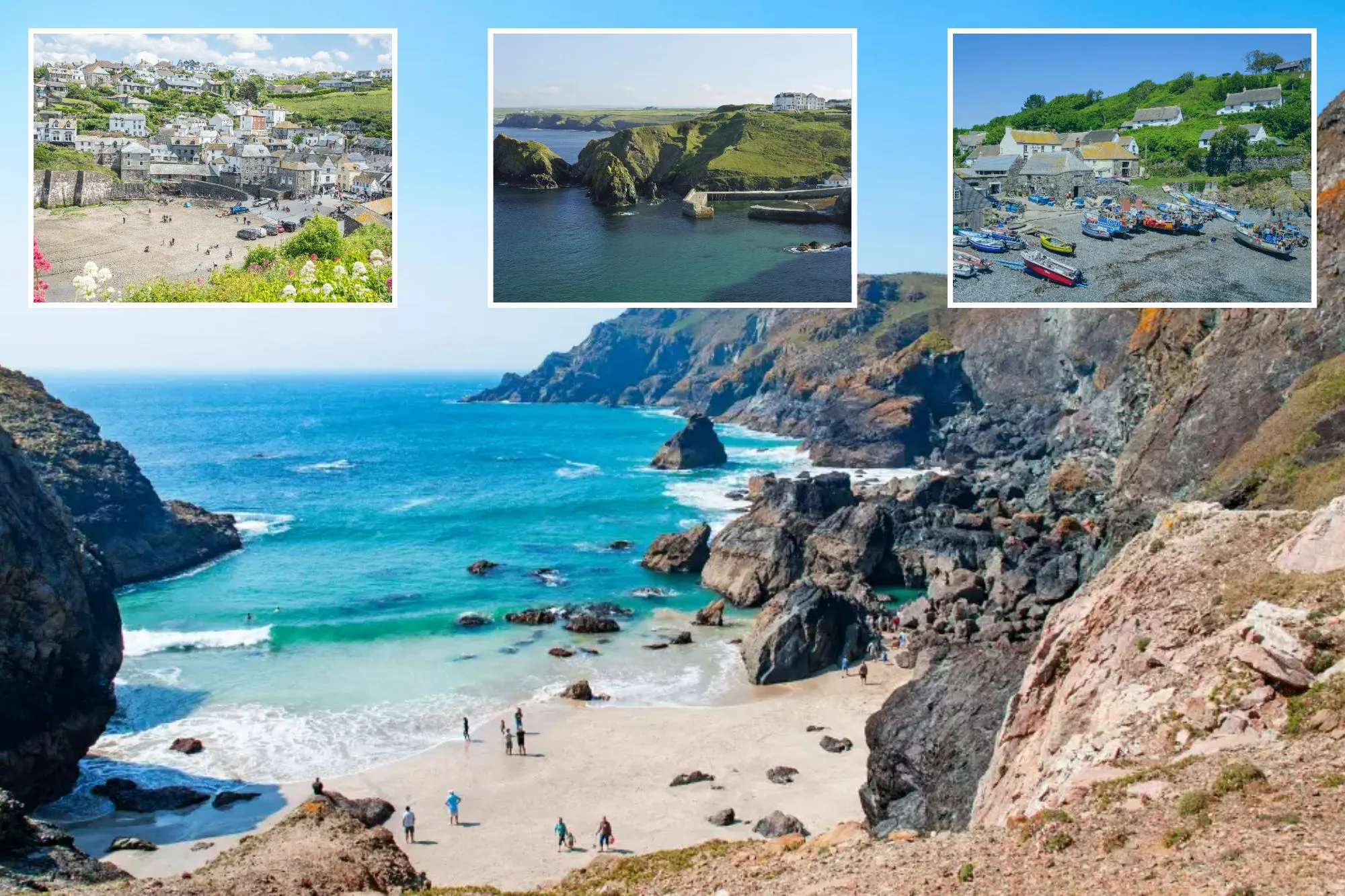The surprisingly divisive world of California wildlife policy
When I tell people what I cover for the Los Angeles Times, they’re delighted. A typical response is, “Sounds like fun!”
My beat is focused on wildlife and the outdoors. And in this world of fierce contention, over seemingly everything, it sounds downright peachy.
This is plenty of joy and wonder in the work. I’ve reported on the rehabilitation of a fuzzy baby sea otter by a surrogate mom and the resurgence of a rare songbird along the L.A. River.
However, there is also plenty of strife, messy politics and difficult decisions. (My inbox reflects the high emotion. I get hate and love mail, just like other reporters.)
Take a saga I’ve been writing about for more than a year concerning a plan by federal wildlife officials to shoot up to nearly half a million barred owls over three decades to save spotted owls in California, Washington and Oregon. Even someone who knows nothing about the matter can guess it’s controversial.
Since the strategy was approved last year by the U.S. Fish and Wildlife Service, animal rights groups have fought to stop it, gaining traction with some U.S. lawmakers. Bipartisan legislators signed onto letters urging the Trump administration to cancel it, citing costs they said could top $1 billion. Then, this summer, Republicans in the House and Senate introduced resolutions that, if successful, would overturn the plan for good.
It was a nightmare scenario for environmental nonprofits, which acknowledge the moral quandary involved with killing so many animals, but say the barred owl population must be kept in check to prevent the extinction of the northern spotted owl, which is being muscled out of its native territory by its larger, more aggressive cousin. They also dispute that ten-figure price tag.
Then, at the eleventh hour, there was an upset in alliances. Logging advocates said canceling the plan could hinder timber sales in Oregon, and threaten production goals set by the Trump administration. That’s right: Loggers were now on the same side as conservationists, while right-wing politicians were aligned with animal welfare activists. Talk about unlikely, uncomfortable political bedfellows.
The loggers’ plea may have tipped the scales. Louisiana Republican John Kennedy, who spearheaded the Senate resolution, said Interior Secretary Doug Burgum — whose portfolio includes timber — personally asked him to abandon the effort. Kennedy, in colorful terms, declined to back down. He called the planned cull “DEI for owls” and said Burgum “loves it like the devil loves sin.” The resolution didn’t pass, splitting the Republican vote almost down the middle.
You don’t have to go to Washington, D.C., to find epic battles over wildlife management.
In California, there’s been much discussion in recent years about the best way to live alongside large predators such as mountain lions and wolves.
Wolves in California were wiped out by people about a century ago, and they started to recolonize the state only 14 years ago. The native species’ resurgence is celebrated by conservationists but derided by many ranchers who say the animals are hurting their bottom line when they eat their cattle.
State wildlife officials recently euthanized four gray wolves in the northern part of the state that were responsible for 70 livestock losses in less than six months, my colleague Clara Harter reported, marking the latest flashpoint in the effort to manage them.
“Wolves are one of the state’s most iconic species and coexistence is our collective future,” said Charlton Bonham, director of the California Department of Fish and Wildlife. “But that comes with tremendous responsibility and sometimes hard decisions.”
Even hulking herbivores such as wild horses stir passionate disagreement.
In the Eastern Sierra last month, I walked among dozens of multi-colored equines with members of local Native American tribes, who told me of their deep connection to the animals — and their heartbreak over U.S. government plans to send them away.
Federal officials say the herd has surged to more than three times what the landscape can support, and pose a safety hazard on highways, while also damaging Mono Lake’s unique geologic formations. Under a plan approved earlier this year, hundreds are slated to be rounded up and removed.
A coalition that includes local tribes — which have cultural ties to the animals that go back generations — disputes many of these claims and argues that the removal plan is inhumane.
“I wish I had a magic wand and could solve it all,” Beth Pratt, of the National Wildlife Federation, told me after my article on the horses was published.
Stay tuned. I’ll be writing this newsletter about once a month to dig into important wildlife stories in the Golden State and beyond. Send me feedback, tips and cute cat photos at [email protected].
More recent wildlife news
Speaking of wolves: The Trump administration ordered Colorado to stop importing gray wolves from Canada as part of the state’s efforts to restore the predators, a shift that could hinder plans for more reintroductions this winter, according to the Associated Press’ Mead Gruver. The state has been releasing wolves west of the Continental Divide since 2023.
More than 17,000 acres of ancestral lands were returned to the Tule River Indian Tribe, which will allow for the reintroduction of Tule elk and the protection of habitat for California condors, among other conservation projects, my colleague Jessica Garrison reports.
Gov. Gavin Newsom’s office called it “the largest ancestral land return in the history of the region and a major step in addressing historical wrongs against California Native American tribes.”
One year after the discovery of golden mussels in the Sacramento-San Joaquin Delta, dense colonies cling to boats and piers, threatening water for cities and farms — and there’s no help on the way, reports CalMatters’ Rachel Becker. State agencies have prioritized protecting other areas in the state from the infested Delta, the hub of the state’s water supply.
Will traditional holiday fare such as crab cakes be on the menu this year? As fellow Times reporter Susanne Rust writes, the need to protect humpback whales in California’s coastal waters, combined with widespread domoic acid contamination along the northern coast, has once again put the brakes on the Dungeness crab commercial fishery and parts of the recreational fishery this fall.
A few last things in climate news
My colleague Ian James wrote about a big shift in where L.A. will get its water: The city will double the size of a project to transform wastewater into purified drinking water, producing enough for 500,000 people. The recycled water will allow L.A. to stop taking water from creeks that feed Mono Lake, promising to resolve a long-running environmental conflict.
California’s proposed Zone Zero regulations, which would force homeowners to create an ember-resistant area around their houses, have stirred backlash. One provision causing consternation may require the removal of healthy plants from within five feet of their homes, which some say isn’t backed by science. Those in favor of the rules say they’re key to protecting dwellings from wildfires. Now, as The Times’ Noah Haggerty explains, state officials appear poised to miss a Dec. 31 deadline to finalize the regulations.
Clean energy stocks have surged 50% this year, significantly outpacing broader market gains despite Trump administration policies targeting the sector, Bloomberg reports. Demand for renewable power to fuel artificial intelligence data centers and China’s aggressive clean-tech expansion are driving the rally.
Park rangers furloughed by the federal shutdown are teaching preschoolers and elementary school students about nature, earning some extra income, my colleague Jenny Gold reports.
One more thing
If you’re not quite ready to let go of the Halloween mood, I have good news. November generally marks the end of tarantula mating season. As I reported, male tarantulas strike out every year from their burrows in search of a lover. Finding one can be fatal, whether she’s in the mood or not. Females are known to snack on their suitors. Gulp.
While the arachnids inhabit areas such as the Angeles National Forest and Santa Monica Mountains year-round, mating season — when the males are on the move — offers the best opportunity to spot one. Through the month of November, you can also gaze at them at the Natural History Museum’s spider pavilion.
-
Share via
This is the latest edition of Boiling Point, a newsletter about climate change and the environment in the American West. Sign up here to get it in your inbox. And listen to our Boiling Point podcast here.
For more wildlife and outdoors news, follow Lila Seidman at @lilaseidman.bsky.social on Bluesky and @lila_seidman on X.







